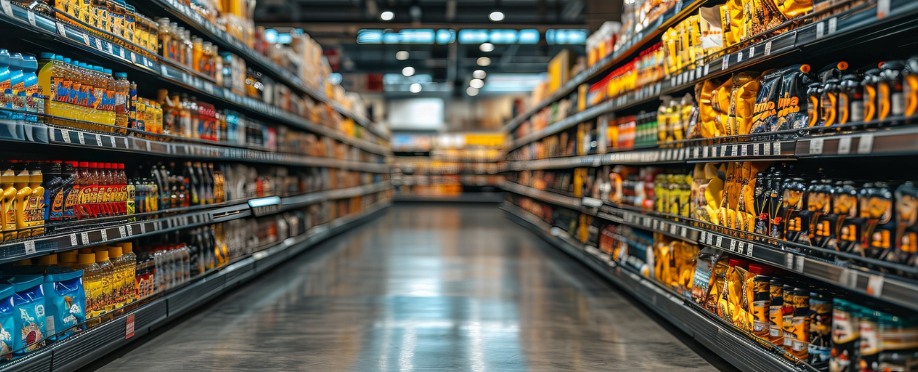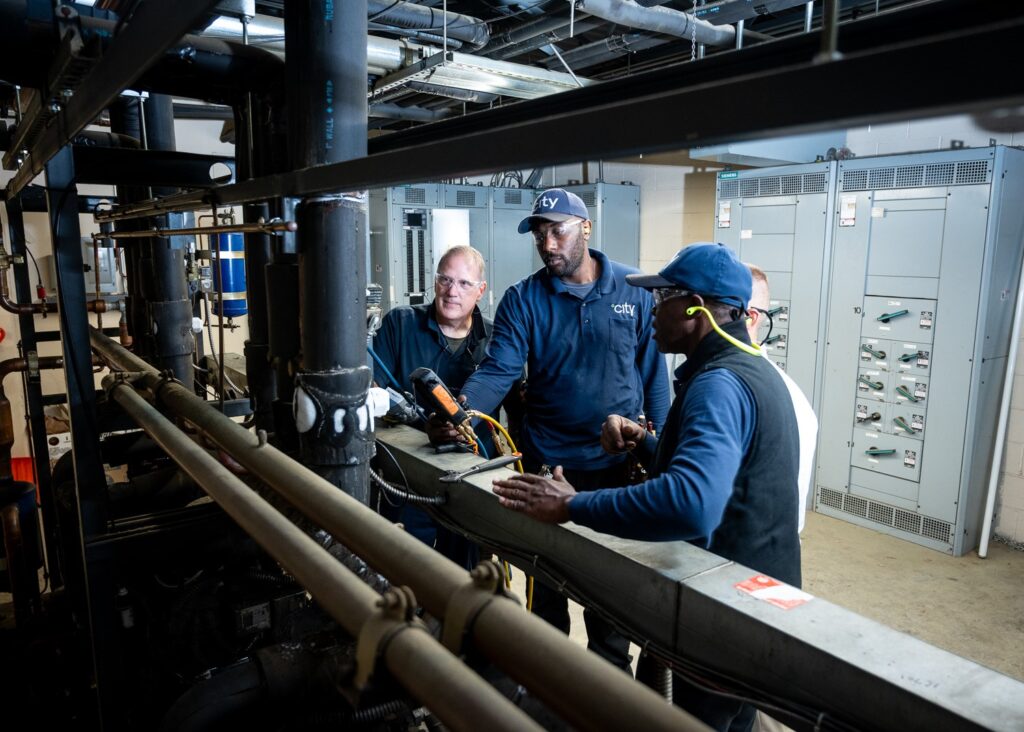
While not always the most glamorous aspect of a retail business, maintenance is critical for ensuring a safe and welcoming environment for customers and employees alike while also supporting operations and cost savings. At least, this is true of retail maintenance done right.
How do you maintain a retail store to ensure that operations remain smooth and costs stay down? From grocery and convenience stores to big box retailers, here are some steps retail facilities teams can follow for better maintenance.
What Is Retail Maintenance?
Maintenance in retail refers to a broad range of tasks designed to keep the facilities of a store safe, compliant, and functional with the purpose of optimizing operations. The maintenance activities of a retailer depend on the size of the store, the type of products it sells, and the specific needs of the facility itself.
For example, supermarkets with commercial refrigeration require specialized maintenance for food equipment and commercial refrigeration, whereas large department stores may require robust HVAC and lighting maintenance to maintain a comfortable shopping environment. Every type of retail operation, and every individual business, has its own unique maintenance needs.
Retail maintenance activities generally include the following:
- Regular cleaning and janitorial services
- HVAC system maintenance
- Electrical and lighting system checks
- Plumbing and restroom upkeep
- Fire safety system inspections
- Commercial refrigeration maintenance
- Pest control
- Exterior maintenance (landscaping, parking lot repairs)
- Seasonal decorations and displays
Benefits of Retail Store Maintenance
Investing in retail store maintenance offers numerous benefits:
- Compliance with safety standards and regulations
- Enhanced customer experience by creating clean, well-lit, and safe environments for shoppers
- Operational efficiency of equipment and facilities, reducing breakdowns and downtime
- Reduced costs on emergency repairs thanks to preventive maintenance measures
- Increased morale and productivity among employees
Retail Maintenance Best Practices
1. Take a proactive approach
At the center of any successful maintenance program is a preventive approach, which involves regularly scheduled inspections and maintenance tasks designed to identify and address issues before they escalate into costly service calls and equipment downtime.
Preventive maintenance best practices for retailers include:
- Prioritizing the safety, compliance, and functionality of essential equipment
- Consulting manufacturer manuals and guidelines for recommended maintenance schedules and procedures
- Clearly defining acceptable performance levels and providing detailed instructions for technicians
- Maintaining detailed and organized record-keeping
- Implementing a robust training program to ensure technicians stay up-to-date on industry best practices
- Regularly updating preventive maintenance checklists
For more tips, check out our Guide to Preventive Maintenance Checklists.
2. Plan seasonally by weather and peak activity levels
The retail industry is a niche marked by seasonal fluctuations — and the same goes for maintenance, as changing weather conditions can take a toll on equipment, building structures, and store operations.
This makes seasonal maintenance checklists an important part of your overall retail maintenance strategy, especially if your focus is on proactive maintenance for optimal efficiency and minimal service costs.
Refer to the following seasonal retail maintenance to get you through sizzling summers, freezing winters, and peak shopping seasons.
Summer Facilities Management Checklist
Winter Checklist for Facilities Managers
Commercial Food Equipment Pre-Holiday Season Checklist for Facilities Managers
With weather-related disasters and damage on the rise, planning ahead for storms and other catastrophic events has become critical to maintenance. Check out the following guides to make sure your facilities are prepared for the unexpected:
3. Track data through technology integration
Utilizing the right software has become essential for modern retail maintenance in today’s rapidly advancing landscape, allowing organizations to make data-backed decisions to improve operations and manage assets effectively. Critical data insights include maintenance schedules, spending by cost per square foot and cost per equipment type, and asset maintenance history.
Two essential maintenance software technologies include:
- CAFM & CMMS software: A CAFM (computer aided facility management) or CMMS (computerized maintenance software) tend to be used interchangeably. A CMMS is comparatively simple, helping to track asset-specific maintenance jobs on a granular basis, while CAFM software can help facility teams plan, execute, and monitor maintenance at a more macro level.
- Asset management system: An AMS (asset management system) allows maintenance teams to tag and store asset data, including asset type, manufacturer, design details, maintenance instructions, and maintenance history, to provide functions like performance monitoring, predictive maintenance scheduling, and capital planning. A top-grade CAFM system will often have asset management functionality built into it.
Many retail businesses struggle with their maintenance because they fail to capture the right information at the source or they don’t know how to properly analyze it. Engaging with a tech-savvy FM provider can help establish data collection practices and implement sophisticated analytics, paving the way for more cost-effective and efficient maintenance strategies.
4. Consider outsourcing to an FM provider
Depending on the size and needs of your retail business, it may be more cost-effective and efficient to contract maintenance services to an outside organization.
According to McKinsey, outsourced facilities management services currently make up more than half of the total FM market in North America, Europe, and the Middle East. In particular, integrated facilities management (IFM), which takes a holistic approach and delivers according to a self-perform model, is on the rise.
Not only can an IFM provider save on maintenance costs by passing on efficiencies through their own infrastructure, processes, and technicians, but they can also help retailers create a long-term strategy for further streamlining maintenance operations. As technology becomes increasingly advanced and integral to the industry, and as net zero standards grow stricter, it’s more important than ever for retailers to team up with experts who can help them stay current with the latest technological innovations and environmental legislation.
5. Prioritize sustainable practices
Retailers who make sustainability, especially energy management, a priority in their maintenance practices will not only gain a competitive edge by meeting increasingly eco-conscious consumer expectations, but they’ll also reduce energy costs and future-proof their business against the demands of new climate legislation.
Some of the top energy efficiency best practices for retailers, especially in the grocery space include:
- Recommissioning existing energy-using equipment and systems, a process which involves, inspecting, testing, and restoring equipment to optimal efficiency.
- Updating lighting technology to LEDs, which can result in a drop of 80–100 KWH down to 20– 30 KWH per month in grocery stores.
- Adding variable speed controls to condenser fans, HVAC unit air supply fans, and compressor room exhaust fans, and other fans
- Implementing continuous energy monitoring with an EMS (energy management system) in conjunction with a continuous monitoring system to ensure energy usage is captured and analyzed 24/7 (For example, City’s SPARK+ power monitoring system is designed to continuously monitor the energy usage of refrigeration, HVAC, and other energy using store systems and equipment. When energy anomalies are detected, the system automatically sends dispatches to enable immediate resolution.)
Additionally, the Science-Based Targets initiative (SBTi) for Net Zero Standard offers a roadmap that retail businesses can use to align their strategies with ambitious climate goals. Read more in our guide, SBTi Net Zero Standard: What Retailers Should Know.
An Innovative Solution to Retail Facilities Maintenance
Retail facilities maintenance is vital for ensuring smooth operations and enhancing the customer experience while keeping costs down. By following the steps above, such as proactive maintenance and seasonal planning, facilities maintenance teams can keep stores operating efficiently while maximizing cost savings.
At City, as part of our industry-disruptive, data-driven delivery system for grocery stores, convenience stores, and other retailers, we can help you implement the latest innovative practices to improve service quality and lower costs. Learn more about our Integrated Facilities Management services.


 2016: City US is established in North America, in partnership with Southeastern Grocers (SEG), servicing over 750 supermarkets across 7 southern states.
2016: City US is established in North America, in partnership with Southeastern Grocers (SEG), servicing over 750 supermarkets across 7 southern states. 1985: Willie and Susan Haughey establish City Refrigeration Holdings (UK) Ltd in Glasgow, UK.
1985: Willie and Susan Haughey establish City Refrigeration Holdings (UK) Ltd in Glasgow, UK. 2009: City Australia launches in Melbourne, in partnership with Coles, servicing over 700 supermarkets across the country.
2009: City Australia launches in Melbourne, in partnership with Coles, servicing over 700 supermarkets across the country. 2015: City Asia launches in Kuala Lumpur, Malaysia, in partnership with Dairy Farm, servicing over 205 supermarkets across the region.
2015: City Asia launches in Kuala Lumpur, Malaysia, in partnership with Dairy Farm, servicing over 205 supermarkets across the region.